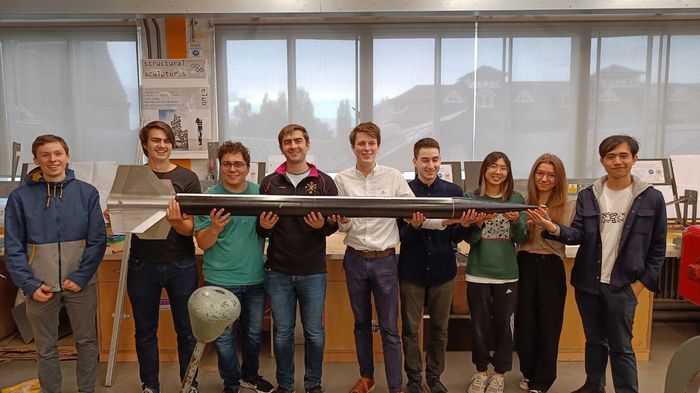Sexism is the unhappy companion of women in STEM
“What does it mean to be a Woman-in-STEM?” Varsity discusses the challenges that women still face in the scientific community

‘Women in STEM’ is a phrase now, perhaps, most commonly heard when joking about the completion of a simple but vaguely technical task. But it remains important as a still burgeoning concept in the academic and educational sphere and is usually closely followed by the despairing of a sexist anecdote.
It’s not a new idea that women are condemned for the same qualities which prove impressive in men. Part of the reason why there has been such an absence of women going into scientific fields is the misogynistic bullying which they face within the school system. Shaming women for being smart or having an interest in science is the instigator of such this culture of under-confidence. Such an environment is produced by rampant stereotyping and misbeliefs about the gendering of intelligence, as highlighted by this report. Efforts to improve participation by women seemingly fail to have a knock-on effect in altering attitudes at a fundamental level. Shame is a perpetual tool used against the progression of women, and this includes women in STEM.
“Sexism in STEM has inevitably endured and is the woman in STEM’s unhappy companion”
Being from a literary background, I’ll present a literary example of the very shame which has historically restricted women from these spaces. Margaret Cavendish—a seventeenth-century natural philosopher and prolific writer—was one of the few women empowered to participate in early scientific discourse. Diarist Samuel Pepys candidly, and rather scathingly, recounts her presentation to the Royal Society with a focus on her slightly jarring appearance. He writes how she appeared in a “dress so antick, and [had a] deportment so ordinary, that I do not like her at all.” The first woman to present to such a prestigious society is chiefly remembered for her physical strangeness rather than the ideas she presented. We see the constant recurrence of this pattern in our modern age. Sexism in STEM has inevitably endured and is the woman in STEM’s unhappy companion.
Another reason for this is the notable absence of female role models for girls interested in STEM subjects or industries. Studies demonstrate the impact of female teachers in determining a pursuit of science at a secondary school level. Yet access to individuals with progressional backgrounds in science and technology remain scarce, often rendering this key support mechanism inaccessible. Mentoring schemes, such as those run by the Inspiration Trust for secondary school students, and CamAWiSE for university students at Cambridge, attempt to remedy such discrepancies and the difficulty of accessing direct representatives. However, the capacity for sustained support and interpersonal motivation remains limited. The phrase ‘women in STEM’ might have household use now, but the struggle for representation on a basic level keeps holding them back.
“When was the last time you saw a woman present a show about science?”
It is not just academic environments which discourage female participation. The cultural bias against women in STEM often begins in the home, where parental figures are more likely to encourage their sons to take up such careers, even if they have the same ability. There are discrepancies between particular countries, but this trend remains global. Its impact has direct consequences: whilst female uptake of science subjects is increasing in schools, career access and research endeavours remain exceedingly challenging. In popular culture, we find examples of women scientists few and far between. When was the last time you saw a woman present a show about science? Brian Cox or David Attenborough are far more prominent names than Emily Calandrelli or Emily Graslie. Evidently, there are overlaps across industries that prevent women from progressing in different careers which retain a central focus on STEM. ‘Women in STEM’ does not just include researchers and academics, the sexism also touches producers, medical professionals, and journalists.
Following this, women in STEM often find that their academic successes do not translate into economic advantages. Employers are more likely to provide men with practical, hands-on experience, and whilst schemes for women and marginalised genders have begun cropping up across schools, universities, and places of employment, issues remain. Women, for example, are twice as likely to leave the industries they enter even when successful, citing burnout, a lack of promotions, and the absence of diversity as the most critical factors. Competitiveness between women in STEM complicates this further: with limited space available and the underpinning need to justify their presence, women are often pitted against each other in a version of ‘who wore it better’, an arguably sexist idea.
It is evident that whilst access and mobility have improved, the long-term effects of gender prejudice and discrimination remain profound barriers for women to thrive. Shedding the hold of sexism is something that future generations will have to keep pushing for.
 Comment / Cambridge’s tourism risks commodifying students18 April 2025
Comment / Cambridge’s tourism risks commodifying students18 April 2025 News / Cambridge student numbers fall amid nationwide decline14 April 2025
News / Cambridge student numbers fall amid nationwide decline14 April 2025 News / Greenwich House occupiers miss deadline to respond to University legal action15 April 2025
News / Greenwich House occupiers miss deadline to respond to University legal action15 April 2025 Comment / The Cambridge workload prioritises quantity over quality 16 April 2025
Comment / The Cambridge workload prioritises quantity over quality 16 April 2025 Sport / Cambridge celebrate clean sweep at Boat Race 202514 April 2025
Sport / Cambridge celebrate clean sweep at Boat Race 202514 April 2025






